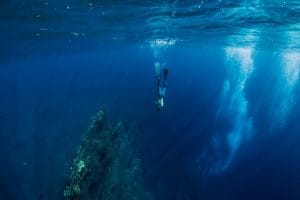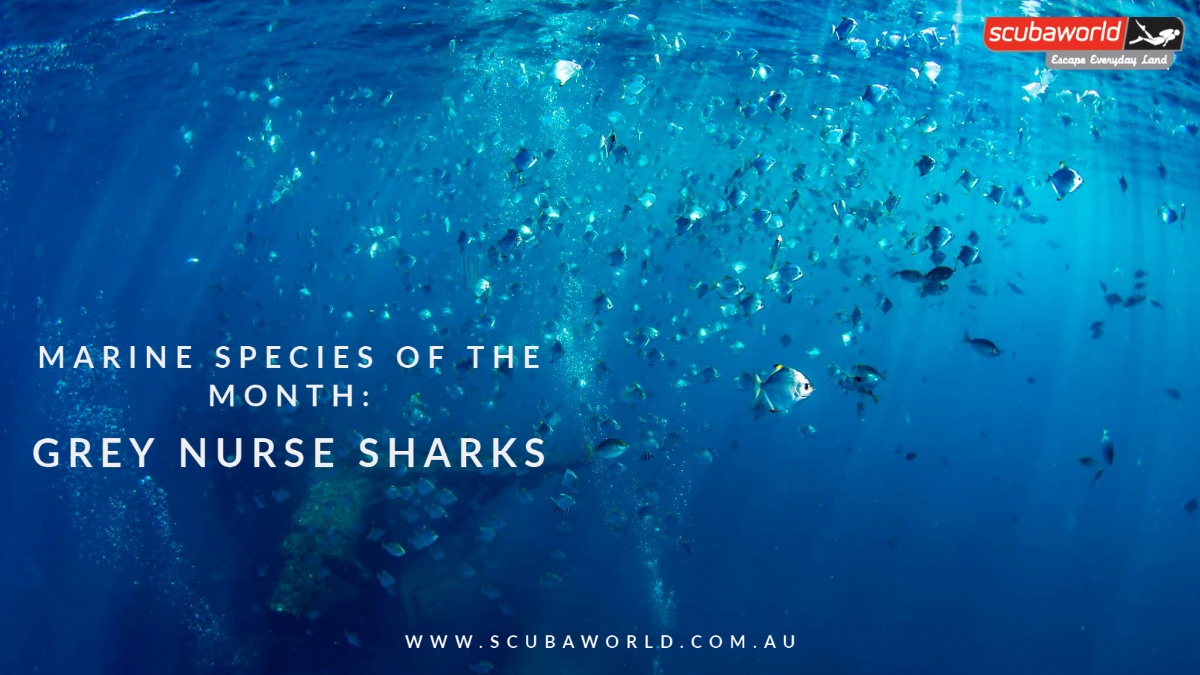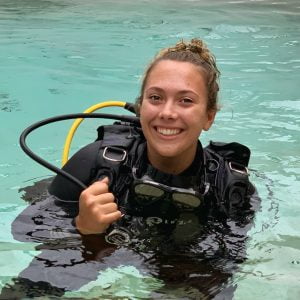
Why Scuba Divers Should Try Freediving: A Personal Perspective from an Scuba diving and Freediving Instructor
Hey everyone, I’m Matt, co-director of OceanSense Freediving here on the Sunny Coast. Over the

The grey nurse shark (GNS, Carcharias taurus) is one of Australia’s most critically endangered species with only 1500 thought to remain within the east coast subpopulation.
In the 1950s, they were hunted almost to extinction because of their fierce appearance. But today, incidental capture by recreational and commercial fishing has left the population staring into the face of extinction.
Grey Nurse Sharks tend to live in shallow inshore waters and have a very placid nature. Their preferred habitats have sandy-bottomed gutters or rocky caves and are close to inshore rocky reefs


The sharks have two large dorsal fins of similar size. The tail is distinctive as the top lobe is larger than the bottom. Their upper body is bronze-coloured, while the underside is paler. Juveniles tend to have darker spots on the lower half of their body that fade as they get older.
The Grey Nurse sharks have the amazing ability to be able to swallow air at the surface of the water to give them buoyancy control
The breeding of Grey Nurse Sharks is quite unusual, mating occurs mainly in autumn and is followed by a 9 – 12-month gestation period and the young are born during winter.
Towards the end of the gestation period, the more fully developed embryos eat the less developed embryos and unfertilised eggs within the female shark’s uterus. As a result, only two pups are produced per litter – one in each uterus. Grey Nurse Sharks tend to breed only once every two years. This is the lowest reproductive rate of any shark and makes it more susceptible to external pressures that increase mortality.
Male Grey Nurse Sharks bite females during the courtship process. In the breeding season it is common to see small scars on the females

The low reproductive rate and already low population numbers means these sharks need our help to boost their population levels.
Grey Nurse Shark Watch (GNS Watch) was launched in June 2011 and is a citizen science research and monitoring program that aims to use the data obtained through our community volunteers and research team to improve the conservation management of the GNS in Australia and to help the Critically Endangered east coast population to recover.
There are two main ways you can contribute to Grey nurse Shark Watch:
Are you a diver or fisher who occasionally encounters grey nurse sharks? If you have a good quality side photo of any of these sharks, you can submit your sighting and/or photographs online at any time during the year using a simple online form.
2. Become a Site Custodian for scheduled surveys
Are you a regular diver-photographer who would like to become a site custodian? If so, nominate yourself as a site custodian! Site custodians that successfully carry out and upload their survey and photo details to our ‘Lodge GNSW Survey’ form on our website will be in the running to win some great prizes.
The Grey Nurse Shark was the first protected shark in the world when it was protected under New South Wales legislation in 1984.
August is the perfect time to come face to face with one of these gentle giants! Click HERE to BOOK your shark dive adventure.
Happy Diving!
Leila Barnsley ~ Scuba World Instructor


Hey everyone, I’m Matt, co-director of OceanSense Freediving here on the Sunny Coast. Over the
Join us Thursday 30th Jan at 5:30pm to hear David Mullins talk about nudibranch defences
Dear members, I would like to take this opportunity to inform you about a few